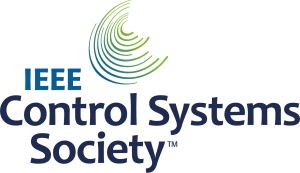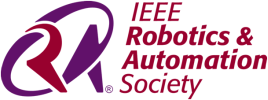T5: Future surveillance technologies to assure a harmonized airspace integration of Unmanned Aircraft Systems in Controlled and Uncontrolled Airspace
Date and time: June 21, 2022, 9:00-13:00 h (half day) *** cancelled ***
Organizers and Presenters
Maarten Uijt de Haag
Technische Universität Berlin, Institute of Aeronautics and Astronautics, Chair of Flight Guidance and Air
Transportation, Berlin, Germany
Christian Janke
Embry Riddle Aeronautical University Worldwide, College of Aeronautics, Frankfurt/M., Germany
Tutorial Summary
In this tutorial, we introduce the key technologies for a collaborative Detect-and-Avoid capability to
enable a future utilization and integration of Unmanned Aircraft Systems (UAS) into the national airspace.
The discussion will include systems such as Automatic Dependent Surveillance-Broadcast (ADS-B) and the
use of cellular services to support the surveillance function. After a general introduction of the
conventional CNS-ATM (Communication, Navigation, Surveillance – Air Traffic Management) approach
used in traditional manned aviation, the underlying challenges for adoption of these principles for
Unmanned Aircraft Systems will be addressed.
In contrast to non-collaborative airspace integration approaches based on, for example, primary radar,
optical sensors, or Lidar solutions, collaborative methods exploit active localization and ubiquitous
connectivity. Under that paradigm, every airspace participant shall localize itself and transmit its position
and other relevant information via broadcast and networked connections.
The tutorial will explain and propose a ground-based receiver infrastructure as well as the technical
requirements and standards for the UAV-based transceivers and connectivity. Robust and redundant
connectivity with Vehicle-to-Vehicle and Vehicle-to-Infrastructure capability are technologies that need
to be utilized to advance the state-of-the-art for UAS airspace integration. The discussion will also address
the effects of latency and bandwidth, cyber security aspects, as well as the status quo of size, weight, and
power requirements for UAS equipage.
Finally, the tutorial will include an on-site demonstration of live-air traffic, including a dashboard and
trajectory analysis of current airborne targets.
Topics to be Covered
• Introduction
The course will start with an overview of the traditional CNS-ATM technologies and processes and includes
non-cooperative surveillance systems such as primary surveillance radar (PSR), independent cooperative
systems such as secondary surveillance radar (SSR) and multi-lateration (MLAT), and dependent
cooperative systems such as ADS-B and Traffic Information Systems – Broadcast (TIS-B). The course will
also address how target tracking is used to turn the position reports from these surveillance technologiesinto aircraft tracks and can be used to predict possible future loss of separation between two or more
aircraft. Related, the course will cover traditional conflict detection and resolution systems used on
manned aviation such as the Traffic Collision Avoidance System II (TCAS II) and the more recent Aircraft
Collision Avoidance System X (ACAS-X), and it’s variance for unmanned aviation, ACAS-Xu. In support of
this discussion, we will also discuss the various airspaces currently used for manned aviation, the airspaces
envisioned for UAS, and relevant communication systems such as VHF and SATCOM.
• From Remote ID to Detect-and-Avoid – how to bring surveillance technology on a UAS
With a solid basis in the area of traditional surveillance and collision avoidance techniques, this part of
the tutorial focusses on detect-and-avoid for UAS including UAS operating at very low levels (VLL), beyond
visual line-of-sight (BVLOS), and UAS operating in an environment with an unmanned traffic management
system (i.e. UTM or U-space). Topics include remote identification (ID), flight authorization, traffic
monitoring, tracking and position reporting, and conformance monitoring in the U-space environment
and the role of current and future (5G) communication systems in this effort.
• Field-Demo
Collaborative demonstration of the state-of-the-art drone surveillance technology, hands-on trial in field test, and active participant dashboard access.
• Summary, discussion, and feedback
Intended Audience
This tutorial is suitable for students, researchers, engineers, and developers interested in technology enabled airspace integration of UAS, enabling future guidance, navigation, and harmonized simultaneous operation of manned and unmanned systems in controlled and uncontrolled airspace. As an outcome of the tutorial participants will gain a deeper understanding of how the traditional aviation tracking and surveillance methods, as well as the processes and technologies that will enable large-scale UAs operations in civilian and public domain applications.
Tutorial Material
Participants will receive detailed presentations and papers. The onsite material will also include a demonstration of ground-based surveillance infrastructure and a live tracking demo of drones via a browser-based dashboard. Surveillance technologies on UAS will be showcased and explained in detail (Holybro S500 platform with ADS-B transceiver and Remote-ID device).
See attached document for a detailed material description.





